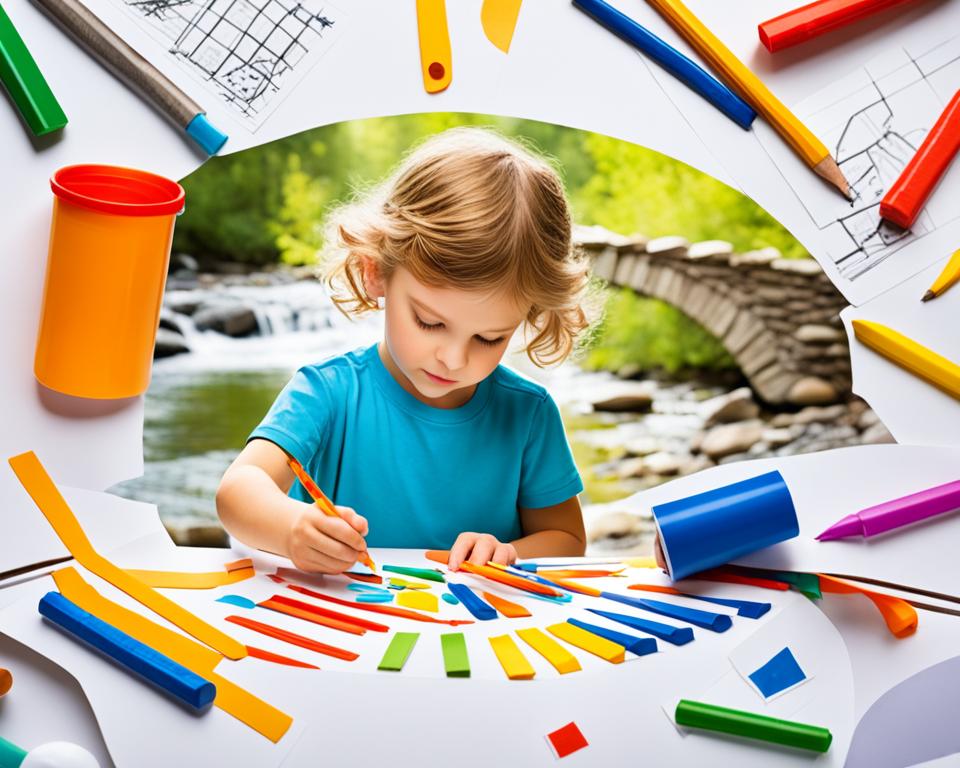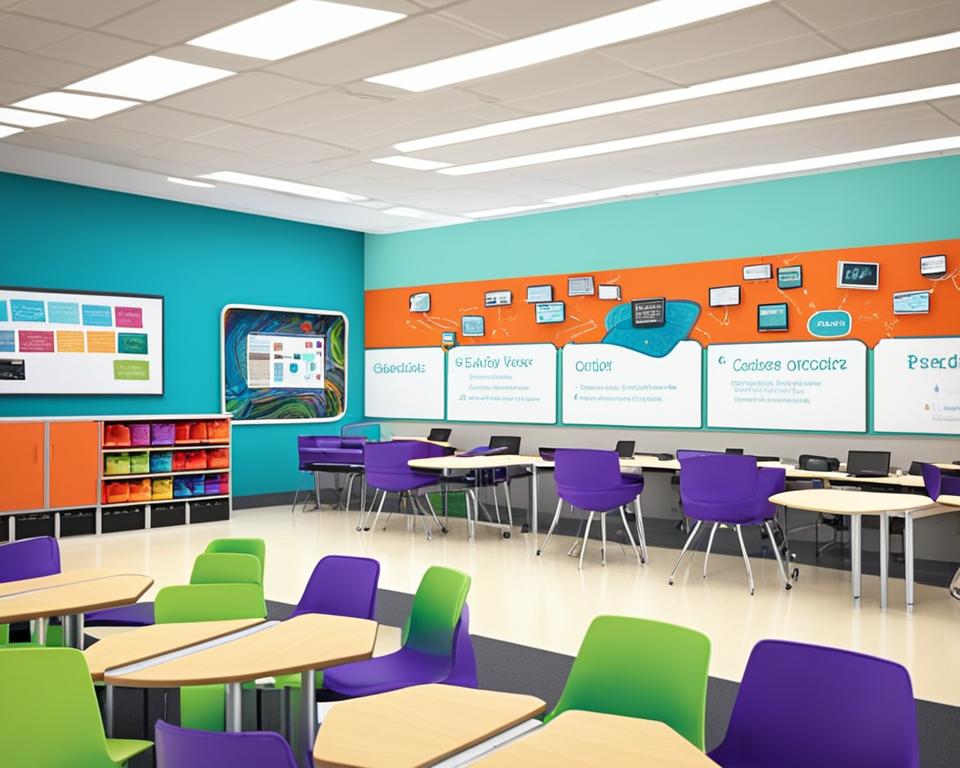- 1. The Importance of Creative Problem-Solving Skills
- 2. The Role of Elementary Schools in Nurturing Problem-Solving
- 3. Strategies for Teaching Creative Problem-Solving
- 4. Overcoming Challenges in Implementation
- 5. Creative Education Programs for Developing Problem-Solvers
- 6. The Future of Work and Lifelong Learning
- 7. Fostering a Mindset of Curiosity and Exploration
- 8. The Benefits of Creative Problem-Solving for Future Careers
- 9. Shifting Curricula Towards Creative Problem-Solving
- 10. Conclusion
- 11. FAQ
- 11.1 What are the benefits of developing creative problem-solving skills in elementary students?
- 11.2 What is the role of elementary schools in nurturing problem-solving skills?
- 11.3 What strategies can teachers use to teach creative problem-solving in elementary schools?
- 11.4 How can schools overcome challenges in implementing creative problem-solving in the classroom?
- 11.5 What are some examples of creative education programs that develop problem-solving skills?
- 11.6 Why is teaching creative problem-solving skills crucial for preparing students for the future workforce?
- 11.7 How does fostering a mindset of curiosity and exploration benefit students?
- 11.8 What are the benefits of developing creative problem-solving skills for future careers?
- 11.9 How can schools shift their curricula towards fostering creative problem-solving skills?
- 12. Source Links
The workforce of today is dominated by “digital native” students who have grown up in a wholly digital, graphics-based world and are prepared to learn endlessly. This requires a shift in how we learn at every stage of life, with a focus on developing the skills needed to excel in the age of automation, where creative problem-solving is king. The Adobe-commissioned global Creative Problem-Solving study confirms that creative problem-solving is the one skill that is critical to success, now and in the future. An astounding 97% of educators and 96% of policymakers agreed that creative problem-solving is important for students to learn in school, as professions requiring problem-solving skills are less likely to be impacted by automation. However, the majority of respondents feel these skills aren’t being nurtured by the curriculum requirements schools face.
The second source further emphasizes the importance of teaching creative problem-solving in elementary schools, as it enhances critical thinking abilities, promotes innovation and adaptability, builds resilience and perseverance, and improves communication and collaboration skills.
Key Takeaways
- The workforce of today is dominated by “digital native” students who are prepared to learn endlessly.
- Creative problem-solving is a critical skill for success in the age of automation.
- Educators and policymakers recognize the importance of teaching creative problem-solving in schools.
- Teaching creative problem-solving in elementary schools enhances critical thinking, innovation, and collaboration skills.
- The majority of respondents feel these skills aren’t being nurtured by the current curriculum requirements.
The Importance of Creative Problem-Solving Skills
The development of creative problem-solving skills in elementary students is crucial for their academic and personal success. By engaging in activities that foster creative education programs, innovative learning approaches, and experiential teaching methods, students can hone a range of essential abilities that will serve them well throughout their lives.
Enhances Critical Thinking Abilities
Through creative problem-solving, students learn to analyze situations from multiple perspectives, evaluate information, and identify patterns. This process enhances their critical thinking abilities, which are fundamental to success in academics and beyond. By developing the capacity to think critically, students gain the tools to make informed decisions and tackle complex challenges.
Promotes Innovation and Adaptability
Creative problem-solving encourages students to step outside the boundaries of traditional thinking and come up with innovative solutions. This fosters a mindset of curiosity and exploration, which is crucial for adapting to new situations and finding creative solutions to emerging challenges. In an ever-changing world, the ability to adapt and innovate is highly valued.
Builds Resilience and Perseverance
The process of engaging in creative problem-solving often requires students to overcome obstacles and keep trying until they find a solution. This builds resilience and perseverance, as students learn to persist in the face of adversity and develop the grit necessary to succeed in academic and professional endeavors.
Improves Communication and Collaboration Skills
Many creative problem-solving activities involve working in teams and collaborating with others. This experience helps students develop effective communication skills, learn to listen to different perspectives, and work together towards a common goal. These teamwork and interpersonal abilities are crucial for success in the workplace and in building positive relationships.
The Role of Elementary Schools in Nurturing Problem-Solving
The essential role of elementary schools in nurturing social-emotional learning and preparing students for future success cannot be overstated. By incorporating creative problem-solving into the curriculum, elementary schools can help students develop the necessary skills and mindset for solving complex problems. Creative problem-solving aligns perfectly with the goals of social-emotional learning programs, as it promotes self-awareness, self-management, social awareness, relationship skills, and responsible decision-making.
The integration of creative problem-solving into elementary education can set students up for success in their future careers and personal lives. By fostering a cross-disciplinary approach to learning, inquiry-based pedagogy, and student-centered learning, elementary schools can cultivate the creativity and critical thinking abilities that are essential for thriving in a constantly evolving world.

Through hands-on curriculum, project-based learning, and experiential teaching methods, elementary schools can provide students with the innovative learning approaches they need to develop the creative education programs and personalized instruction that will empower them to become future problem solvers.
Strategies for Teaching Creative Problem-Solving
Cultivating creative problem-solving skills in elementary school students requires a multifaceted approach. According to the second source, educators can employ several effective strategies to foster these crucial abilities in their classrooms.
Incorporate Open-ended Questions and Scenarios
One key strategy is to incorporate open-ended questions and real-life scenarios into daily lessons. By challenging students to think critically and come up with innovative solutions to complex problems, you can encourage them to develop their creative problem-solving skills. This approach helps students analyze situations from multiple angles, evaluate information, and make informed decisions.
Encourage Divergent Thinking and Brainstorming
Providing opportunities for students to engage in divergent thinking and brainstorming activities can also be highly effective. By encouraging students to generate as many ideas as possible without judgment, you can foster a mindset of creativity and exploration. This process helps students think outside the box and consider a diverse range of solutions to the challenges they face.
Foster a Supportive and Inclusive Classroom Environment
Creating a supportive and inclusive classroom environment is essential for promoting creativity and innovation. When students feel safe to share their ideas without fear of judgment, they are more likely to take risks and explore unconventional solutions. By valuing diversity of thought and encouraging active participation, you can cultivate a classroom culture that celebrates creativity and problem-solving.
Integrate Arts and Creativity into Problem-Solving Activities
Integrating arts and creativity into problem-solving activities can be a powerful way to engage students and tap into their creative potential. Allowing students to express their ideas through drawing, painting, storytelling, or other creative mediums can help them explore different approaches to problem-solving and unlock their innovative thinking.
Provide Collaborative Problem-Solving Projects
Collaborative problem-solving projects offer an excellent opportunity to develop a range of skills, including teamwork, communication, and the ability to consider diverse perspectives. By working together in groups, students can learn from each other, share ideas, and collectively develop innovative solutions to complex challenges. This approach not only fosters creative problem-solving but also enhances students’ social-emotional learning and interpersonal skills.
Overcoming Challenges in Implementation
While teaching creative problem-solving in elementary schools is crucial, it can also come with its challenges. To overcome these obstacles, the second source suggests several practical solutions that can help ensure the successful implementation of these innovative learning approaches.
Professional Development for Teachers
Providing teachers with professional development opportunities focused on creative problem-solving strategies can equip them with the necessary knowledge and skills to effectively implement these techniques in the classroom. By investing in the continuous growth and training of educators, schools can empower their teaching staff to confidently integrate experiential teaching methods and hands-on curriculum into their daily lessons.
Parental Involvement and Support
Engaging parents in the process of teaching creative problem-solving and providing them with resources for activities that can be done at home to reinforce problem-solving skills can help ensure a consistent and supportive approach. By fostering a collaborative partnership between schools and families, students can benefit from a cohesive learning environment that nurtures their interdisciplinary education and personalized instruction.
Integration of Technology and Digital Tools
Utilizing technology and digital tools can enhance creative problem-solving activities, allowing students to engage with innovative teaching methods and experiential learning activities while developing their problem-solving abilities. By seamlessly integrating collaborative classrooms and cross-disciplinary approach with the use of digital resources, schools can provide students with a well-rounded and immersive student-centered learning experience.

Creative Education Programs for Developing Problem-Solvers
According to the third source, Future Problem Solving is a program that proudly celebrates 50 years of placing close to a million young people at the core of a dynamic, purposeful learning experience. Each year, K-12 students around the world participate in a variety of creative education programs and innovative learning approaches designed to empower curious youth to become changemakers. Problem solvers in the Future Problem Solving program learn how to think, not what to think, and gain the essential skills they need to succeed in work and life.
The program helps young people develop their own voices and gives them the confidence to use them. By engaging in experiential teaching methods and hands-on curriculum, students in the Future Problem Solving program cultivate their creative problem-solving abilities, project-based learning skills, and interdisciplinary education approaches. This personalized instruction and student-centered learning ensures the skills students learn stay with them for life, preparing them for success in a wide range of alternative schooling models and inquiry-based pedagogy.
The program’s evidence-based approach to inspiring young people fosters a collaborative classrooms environment, where students engage in project-based curriculum, innovative teaching methods, and experiential learning activities that cultivate their creativity and critical thinking abilities. By embracing a cross-disciplinary approach, the Future Problem Solving program empowers students to tackle real-world challenges and become the problem-solvers of tomorrow.
The Future of Work and Lifelong Learning
As the world continues to evolve rapidly, the future of work is marked by constant change. To navigate through this dynamic landscape, people of all ages must commit to a lifelong journey of education and skill development. One of the essential tools for success in this ever-changing world is the ability to engage in creative problem-solving.
Adapting to Constant Change
The source emphasizes that the ability to adapt and innovate is highly valued in the workforce of the future. Creative problem-solving skills are crucial for helping professionals and students alike adapt to new challenges and find innovative solutions to complex problems. By fostering a mindset of adaptability and a willingness to embrace change, we can better prepare our children for the unpredictable nature of the future workplace.
Continuous Skill Development
In the face of technological advancements and shifting industry demands, the need for continuous skill development has become paramount. Interdisciplinary education and personalized instruction can empower individuals to stay ahead of the curve, equipping them with the tools necessary to thrive in a constantly evolving job market. By prioritizing lifelong learning, we can ensure our children are equipped with the adaptability and problem-solving skills required for long-term success.
Collaboration and Communication in the Workforce
As the nature of work becomes increasingly collaborative, the ability to communicate effectively and work well in teams has become essential. Innovative teaching methods that focus on experiential learning activities and cross-disciplinary approaches can help students develop the interpersonal skills needed to navigate the workforce of the future. By fostering a culture of collaborative classrooms and student-centered learning, we can empower our children to excel in the ever-changing world of work.

Fostering a Mindset of Curiosity and Exploration
According to the second source, creative problem-solving encourages students to think outside the box and come up with innovative solutions. It fosters a mindset of curiosity and exploration, which is crucial for adapting to new situations and finding creative solutions to challenges. In an ever-changing world, the ability to adapt and innovate is highly valued.
By nurturing a mindset of curiosity and exploration in elementary school students, educators can help prepare them for success in their future careers and personal lives. This approach aligns with the goals of creative education programs, innovative learning approaches, and inquiry-based pedagogy, all of which aim to cultivate creativity and foster critical thinking among students.
Through hands-on curriculum, project-based learning, and experiential teaching methods, students are encouraged to explore, experiment, and discover new ways of solving problems. This interdisciplinary education, personalized instruction, and alternative schooling models empower students to develop a love for learning and a passion for innovation.
By integrating arts, collaborative classrooms, and a cross-disciplinary approach, educators can nurture a student-centered learning environment that inspires creativity and fosters a mindset of curiosity and exploration. This experiential learning activities and innovative teaching methods equip students with the skills they need to navigate the ever-changing landscape of the future workplace.
The Benefits of Creative Problem-Solving for Future Careers
As the world continues to evolve at an ever-accelerating pace, the ability to navigate the unknown and overcome unfamiliar challenges is becoming increasingly essential for future success. Creative problem-solving skills equip students and professionals with the tools they need to thrive in a constantly changing landscape, where the jobs and technologies of tomorrow may not even exist today.
Navigating the Unknown
With the rapid advancements in technology and the shifting demands of the workforce, it’s crucial that we prepare our students for careers that may not yet exist. By developing their creative problem-solving abilities, we empower them to adapt to new situations, embrace challenges, and continuously learn through success and failure. These skills enable them to navigate the unknown with confidence, fostering the resilience and entrepreneurial spirit necessary for thriving in the future.
Overcoming Unfamiliar Challenges
The jobs of the future will likely present unfamiliar challenges that require innovative, out-of-the-box thinking. Creative problem-solving equips students with the ability to approach these challenges from multiple angles, drawing connections between seemingly unrelated concepts, and crafting cutting-edge solutions. This mindset of exploration and discovery allows them to tackle the unknown with a sense of curiosity and perseverance, ultimately positioning them for success in their future careers.
Developing Cutting-Edge Solutions
In a world where change is the only constant, the ability to develop innovative, cutting-edge solutions is paramount. By nurturing creative problem-solving skills, we cultivate a generation of thinkers and doers who are not only capable of adapting to change, but also driving it. These students and professionals will be uniquely positioned to tackle complex, multifaceted challenges, using their creativity and problem-solving abilities to create solutions that push the boundaries of what’s possible.

Shifting Curricula Towards Creative Problem-Solving
As the world rapidly evolves, the need to shift educational curricula towards fostering creative problem-solving skills has become increasingly evident. The traditional content-centric approach to education is no longer sufficient to prepare students for the demands of the future workforce and the challenges they will face in their personal and professional lives.
Moving Beyond Content-Centric Education
Instead of solely focusing on imparting content knowledge, the educational system must shift its emphasis towards empowering students to become creators and problem-solvers. This involves equipping them with the critical skills needed to navigate the abundance of information available, distinguish between truth and falsehood, and develop innovative solutions to complex challenges. By cultivating these creative education programs and innovative learning approaches, we can ensure that our students are better equipped to thrive in a world where continuous learning and adaptation are essential.
Redefining the Role of Educators
This shift in curricular focus also necessitates a redefinition of the educator’s role. Rather than being the sole repository of knowledge, educators must now act as facilitators, posing challenges and guiding students through the experiential teaching methods of inquiry-based pedagogy and student-centered learning. This allows students to practice investigating, inventing, and developing solutions, fostering the critical thinking abilities, innovation and adaptability, and collaborative skills that are essential for success in the modern world.
Providing Accessible Tools and Resources
To support this curricular shift towards creative problem-solving, it is crucial to provide educators and students with accessible tools and resources. This includes hands-on curriculum, project-based learning, and interdisciplinary education opportunities that integrate arts integration and experiential learning activities. By making these innovative teaching methods and personalized instruction approaches widely available, we can help reduce inequalities and ensure that all students have the opportunity to develop the creative education programs and problem-solving skills they need to thrive in the future.

Conclusion
In conclusion, teaching creative problem-solving in elementary schools is crucial for fostering social-emotional development and preparing students for future success. By developing critical thinking abilities, promoting innovation and adaptability, building resilience and perseverance, and improving communication and collaboration skills, we equip our students with the necessary tools to navigate through the challenges of the modern world.
Educators, parents, and policymakers must prioritize creative problem-solving in elementary education to ensure our students are equipped with the skills they need to thrive in the constantly evolving future. By integrating hands-on curriculum, project-based learning, and interdisciplinary education, we can nurture a student-centered learning environment that fosters creativity and critical thinking.
Ultimately, the success of our students in the future workforce and their ability to adapt to the innovative learning approaches and experiential teaching methods of tomorrow will depend on the creative education programs and personalized instruction they receive today. By investing in the development of creative problem-solving skills in elementary schools, we are setting our students up for a lifetime of success and fulfillment.
FAQ
What are the benefits of developing creative problem-solving skills in elementary students?
According to the second source, creative problem-solving encourages students to think critically, analyze situations from multiple angles, and develop the ability to evaluate information, identify patterns, and make informed decisions. It also fosters a mindset of curiosity and exploration, which is crucial for adapting to new situations and finding creative solutions to challenges. Additionally, the process of engaging in creative problem-solving builds resilience and perseverance, as well as effective communication and collaboration skills.
What is the role of elementary schools in nurturing problem-solving skills?
The second source emphasizes that elementary schools play a vital role in nurturing social-emotional learning and preparing students for future success. By incorporating creative problem-solving into the curriculum, elementary schools can help students develop the necessary skills and mindset for solving complex problems. Creative problem-solving aligns perfectly with the goals of social-emotional learning programs, as it promotes self-awareness, self-management, social awareness, relationship skills, and responsible decision-making.
What strategies can teachers use to teach creative problem-solving in elementary schools?
The second source outlines several strategies, including incorporating open-ended questions and real-life scenarios into daily lessons, providing opportunities for divergent thinking and brainstorming, fostering a supportive and inclusive classroom environment, integrating arts and creativity into problem-solving activities, and offering collaborative problem-solving projects.
How can schools overcome challenges in implementing creative problem-solving in the classroom?
The second source suggests several practical solutions, such as providing teachers with professional development opportunities focused on creative problem-solving strategies, engaging parents in the process and providing resources for at-home activities, and utilizing technology and digital tools to enhance creative problem-solving activities.
What are some examples of creative education programs that develop problem-solving skills?
According to the third source, the Future Problem Solving program is a 50-year-old program that places students at the core of a dynamic, purposeful learning experience. The program helps young people develop their own voices, gain the skills they need to succeed in work and life, and learn how to think, not what to think.
Why is teaching creative problem-solving skills crucial for preparing students for the future workforce?
The first source emphasizes that the ability to adapt and innovate is highly valued in the ever-changing world, and that creative problem-solving skills are crucial for success in the workforce. Additionally, the ability to collaborate and communicate effectively with others is essential for navigating the future of work, as people of all ages will need to commit to lifelong education to stay relevant.
How does fostering a mindset of curiosity and exploration benefit students?
According to the second source, by nurturing a mindset of curiosity and exploration in elementary school students, educators can help prepare them for success in their future careers and personal lives. This mindset is crucial for adapting to new situations and finding creative solutions to challenges in an ever-changing world.
What are the benefits of developing creative problem-solving skills for future careers?
The first source states that having creative problem-solving skills ensures students and professionals can continuously learn through success and failure, work within diverse teams, accept challenges, and take risks, all anchored in persistence, grit, and entrepreneurial spirit. These skills are crucial for thriving in a constantly changing world and developing innovative, cutting-edge solutions to unfamiliar problems.
How can schools shift their curricula towards fostering creative problem-solving skills?
The first source suggests that instead of just providing students with content, the focus should be on helping them learn to be creators and problem-solvers, and to distinguish between true and false information. This shift in focus also redefines the role of the educator, as they no longer hold the answer to the challenge, but instead pose the challenges, allowing students to practice investigating, inventing, and developing solutions. Additionally, providing accessible tools and resources for students and educators to improve their creative problem-solving skills can help reduce inequalities and support this curricular shift.
Source Links
- https://blog.adobe.com/en/publish/2018/09/05/why-creative-problem-solving-and-lifelong-learning-should-anchor-21st-century-education
- https://everydayspeech.com/blog-posts/general/understanding-the-importance-of-teaching-creative-problem-solving-in-elementary-schools/
- https://fpspi.org/who-we-are/
